Open the Box!
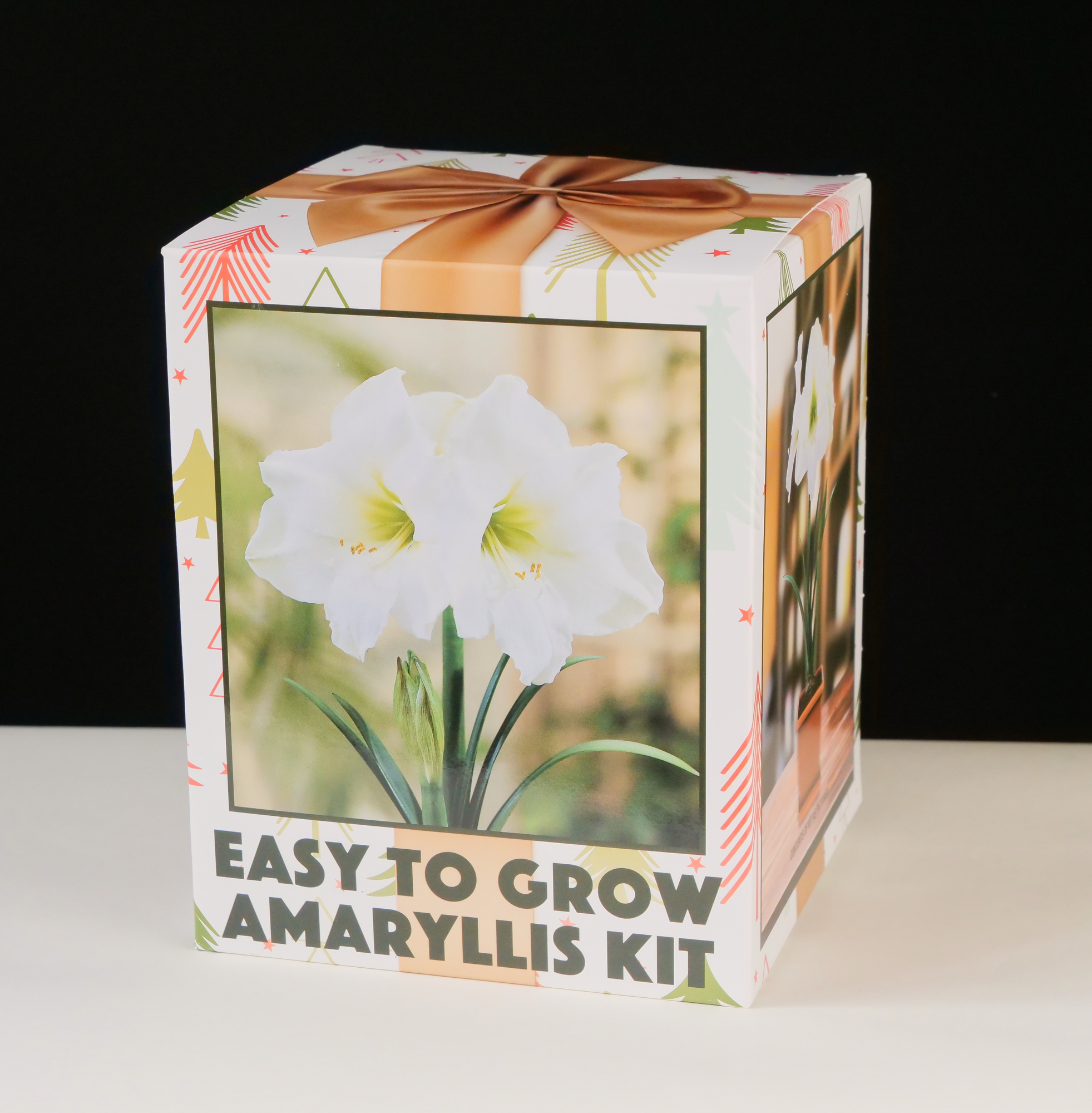
In a year when we are still reeling from the tragic human toll of a global pandemic, we must now also deal with the economic aftershocks. While it seems almost trivial to be concerned with the rising prices of non-essential items, some of these fulfill a need that shouldn’t be ignored. Seeing this box kit for an even $14 seemed like a decent bargain. After purchasing the kit, emaryllis found it at other nurseries ranging from $12-$16…so even at high end retailers it is not badly priced considering what comes along with the bulb. While big box stores may sell much cheaper kits, they are “loss leaders” aimed at getting shoppers to put more profitable items into their carts. Of course, the caveat here is that most of these kits use much smaller bulbs than those typically sold “naked” in bins. So, let’s dive in and see what we get in this kit, and hope it lives up to the expectations advertised on the holiday gift themed box.
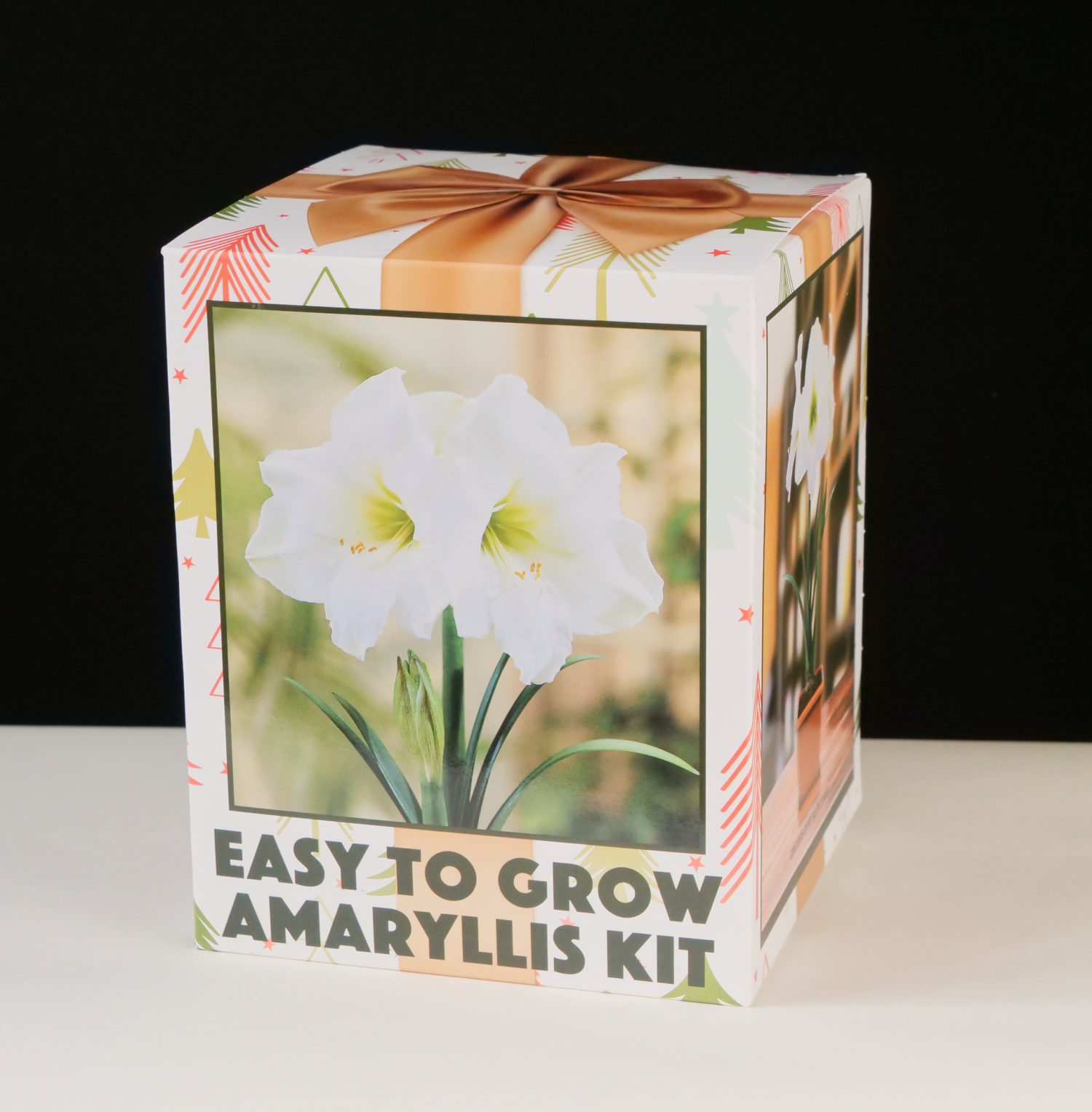
This box kit brand is a familiar one, and emaryllis has tested it in various color offerings in the past. In 2016 a kit labeled ‘Minerva’ ended up being an example of ‘Mambo’, so we are on notice that correct labeling is not expected but the color class will probably at least be solid white!
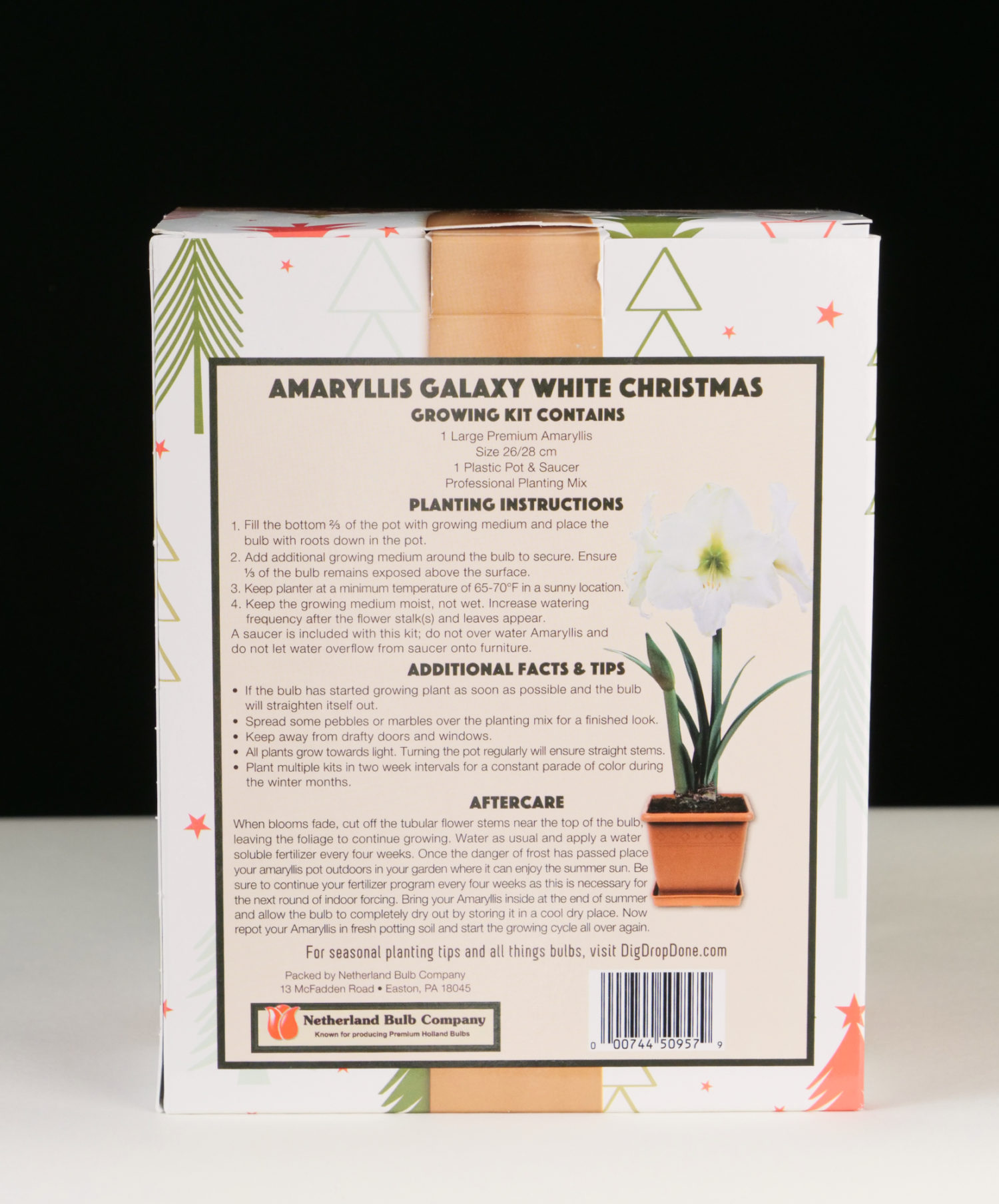
It’s interesting that the kit is bestowed with an actual cultivar name. ‘White Christmas’ is a very old one at that, having been registered in 1956 by van Meeuwen. Here’s the issue: that cultivar has been out of production for many, many moons! The KAVB registration site occasionally goes through their listings to note which are no longer being grown. The last time they did a major update for Hippeastrum hybrids was in 2007, and ‘White Christmas’ was one of those marked “no longer in production since 2007”. In this case actual production probably ended many years before that. The upshot is, this will be whatever white cultivar is in high production at the moment. It isn’t always easy to distinguish among some of the white clones, but we will attempt to do just that. The stock photo looks like the big and blousy ‘Christmas Gift’, but since the bulb is from Peru, that is unlikely. The major Peruvian grower, AgroFloral produces ‘Denver’, ‘Siberia’, and their own ‘White Candle’, so we can bet it will be one of those. Of course, emaryllis is hoping for the latter, as it has’t been marketed here yet!
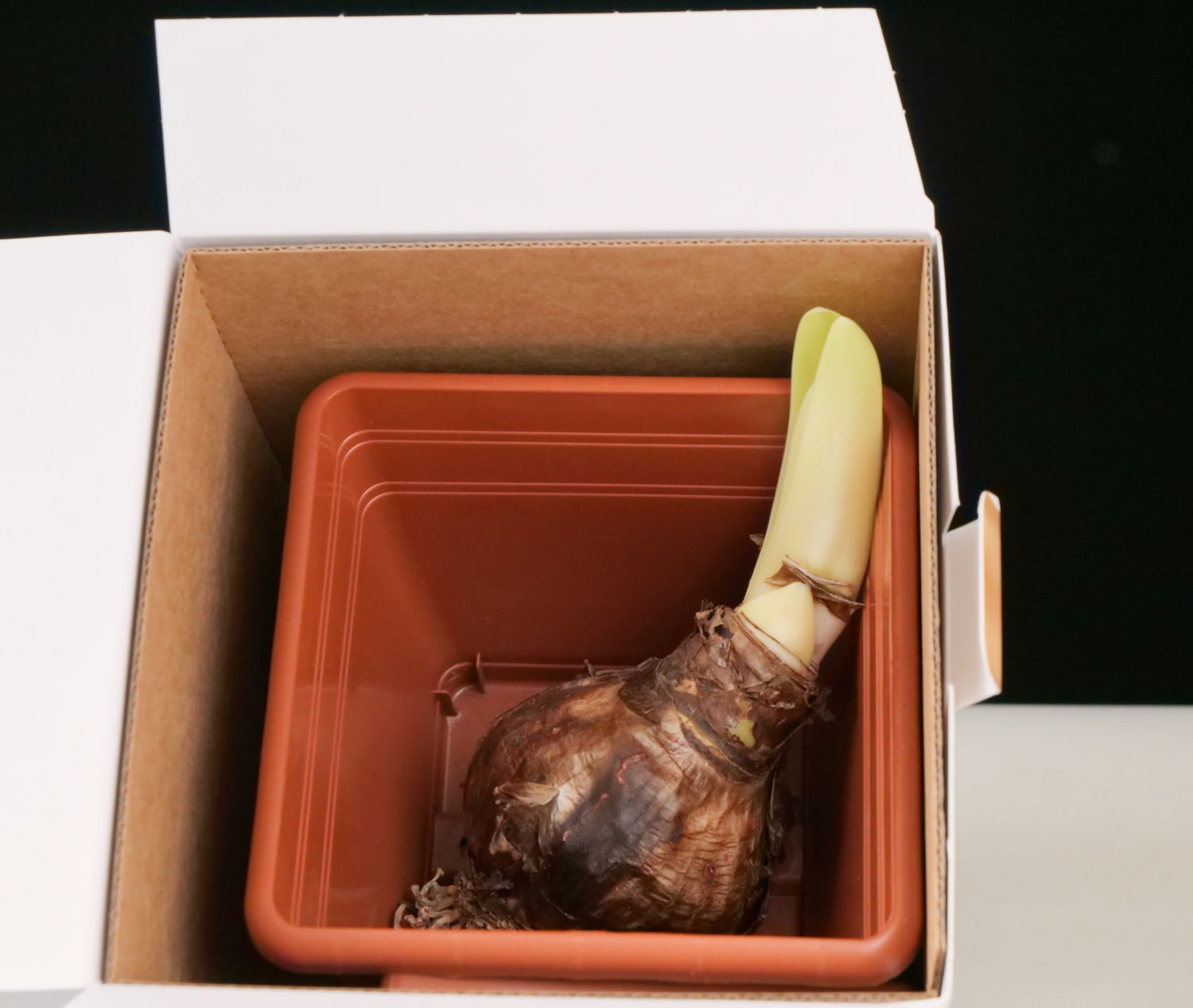
Already sprouting out, we are lucky that only the emerging foliage is a bit curved, and the two scapes are just starting to emerge. The lack of packing material in the kit means that too much jostling as the bulb sprouts could lead to breakage. Do not give these kits a shake to get a sense of what’s inside. Comparing the weight of several boxes could possibly yield a heftier bulb, but these kits were very uniform by my estimation.
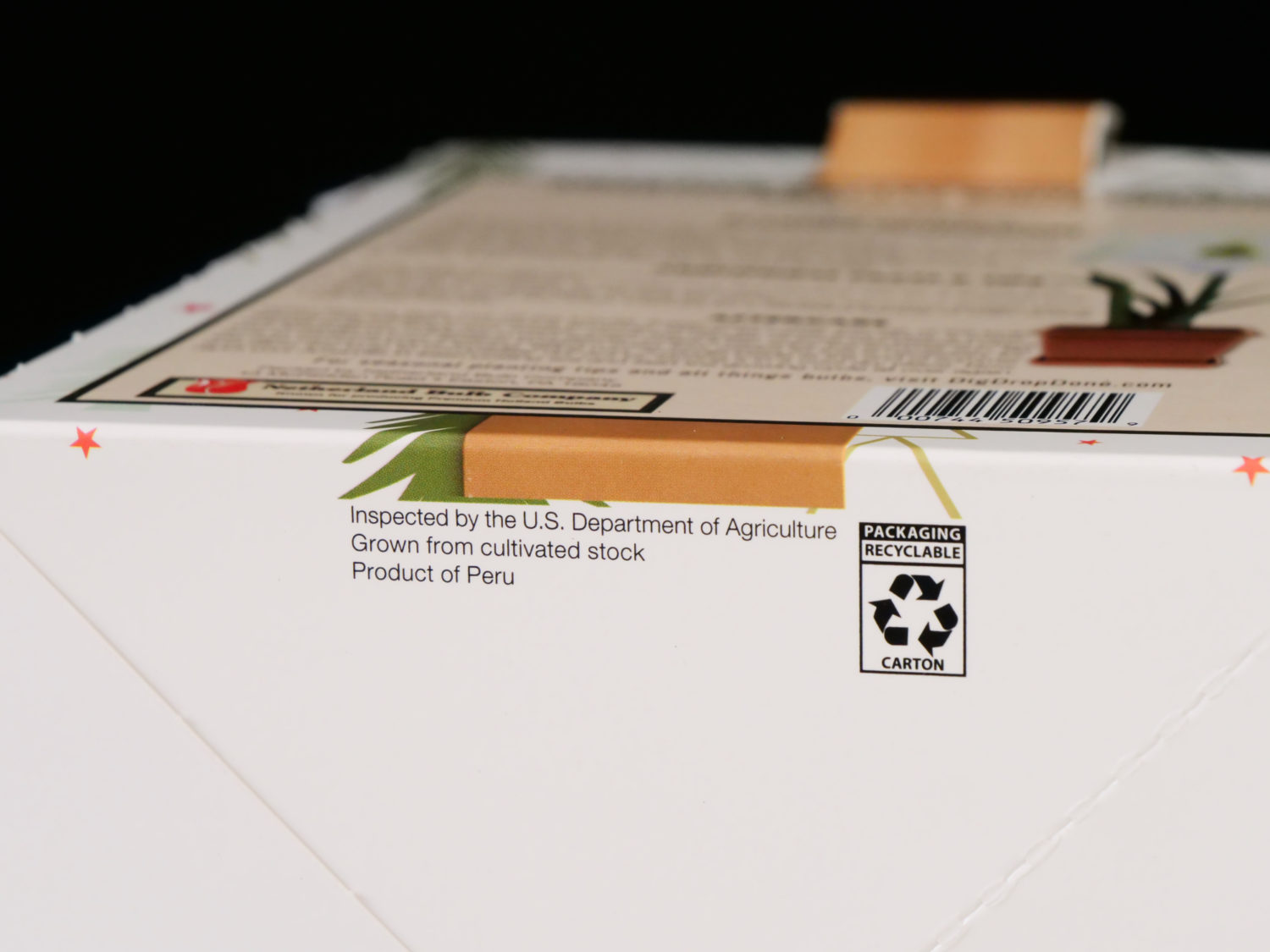
This kit brand is using bulbs produced in Peru, so they were produced where it is currently spring, verging on summer. These bulbs were harvested months ago, and held at cool temperatures to halt development. Once they arrive at their retail destination, the warm temperatures cause instant initiation of both floral scapes and foliage. They are put out along with other merchandise aimed at driving early holiday sales. This isn’t such a bad idea with kits that have been produced in the same hemisphere in which they are sold. Some kits use bulbs grown in the Netherlands or Israel, where getting them grown and cool-conditioned for 8 weeks in time to force by late December bloom is challenge and an art form. Take it from emaryllis, if buying a box kit in October or November with a bulb from Peru, do not wait to present it as a hostess gift at a party in a few weeks or worse yet for Christmas day…Open the Box! Plant it right away for yourself 🙂 After all that has transpired, you deserve it.
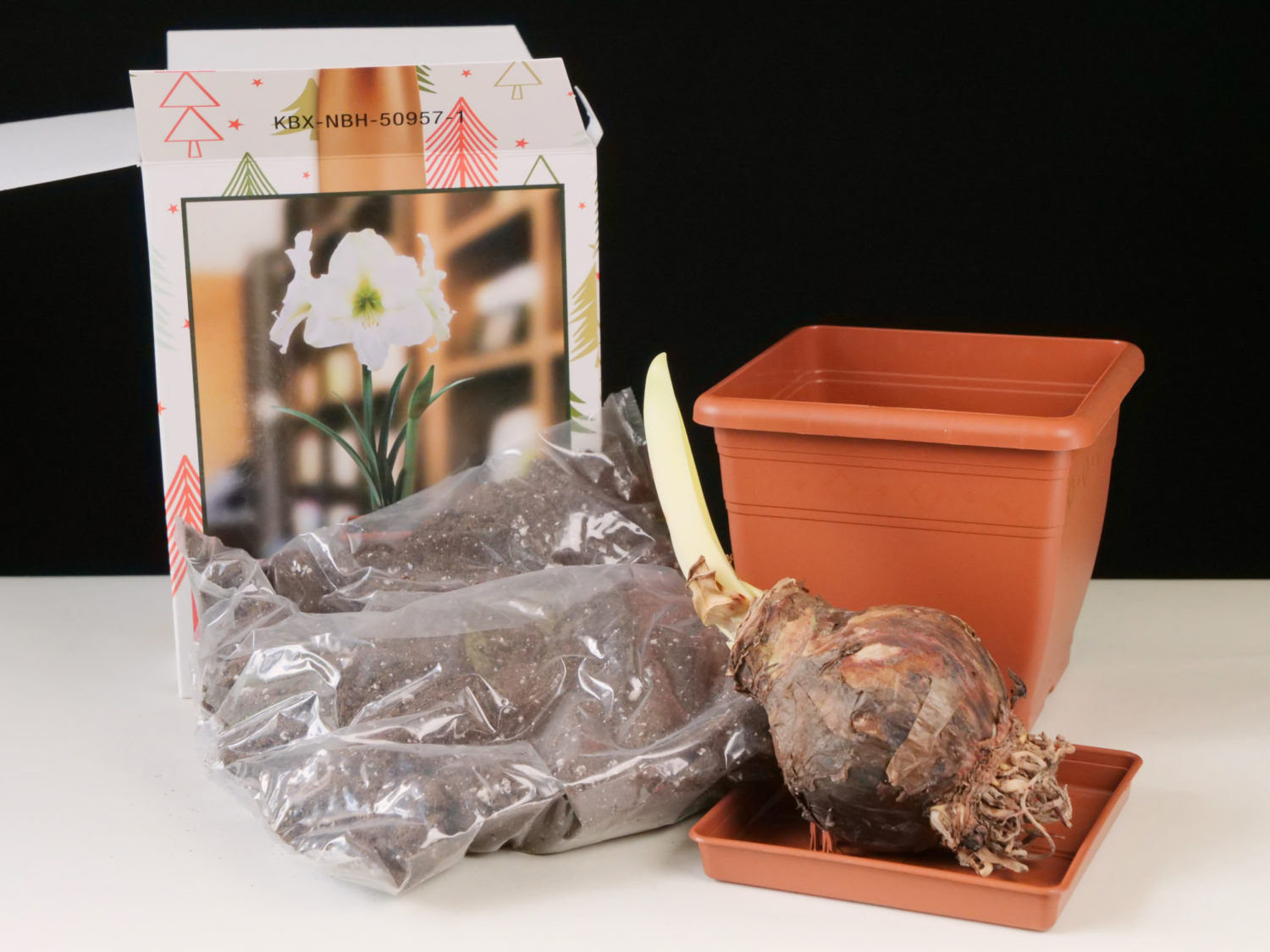
This is the style of kit emaryllis likes best. Potting media with aerating aggregate mixed with organic matter, it should both drain and hold moisture well. The 5″/13cm pot has excellent drainage holes and a snap-on saucer which will serve to give the pot added balance as the flower scapes grow. The thickness of the resin, rolled edge, terra cotta color and subtle decorative pattern give the kit a finished, not cheap feel. As for the bulb, it is firm and measures 24cm which is typical for these kits that don’t claim any size class. The roots are a disappointment as they are virtually nonexistent…only a couple of fleshy nubs amongst the short, mostly dead ones. This bulb was harvested long ago. That hasn’t always spelled disaster for the most resilient cultivars, so we will root for it to root well!
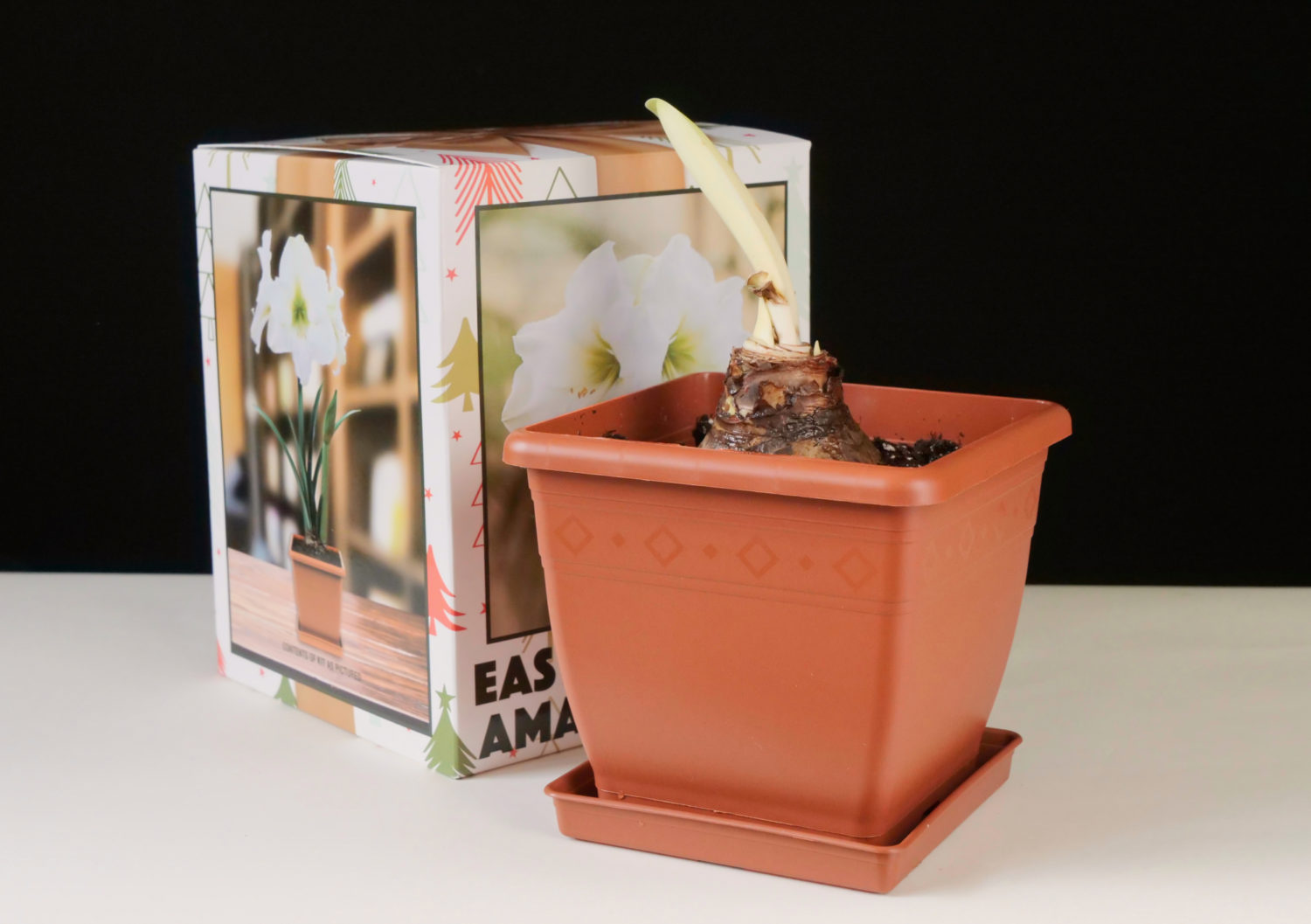
Below we see that these Peruvian bulbs are rarin’ to go! So much so that it is a problem; many nurseries are opening the kits so that the sprouts don’t curl and break in the box, or even potting them up as seen 14 November 2021 at high-end nursery.
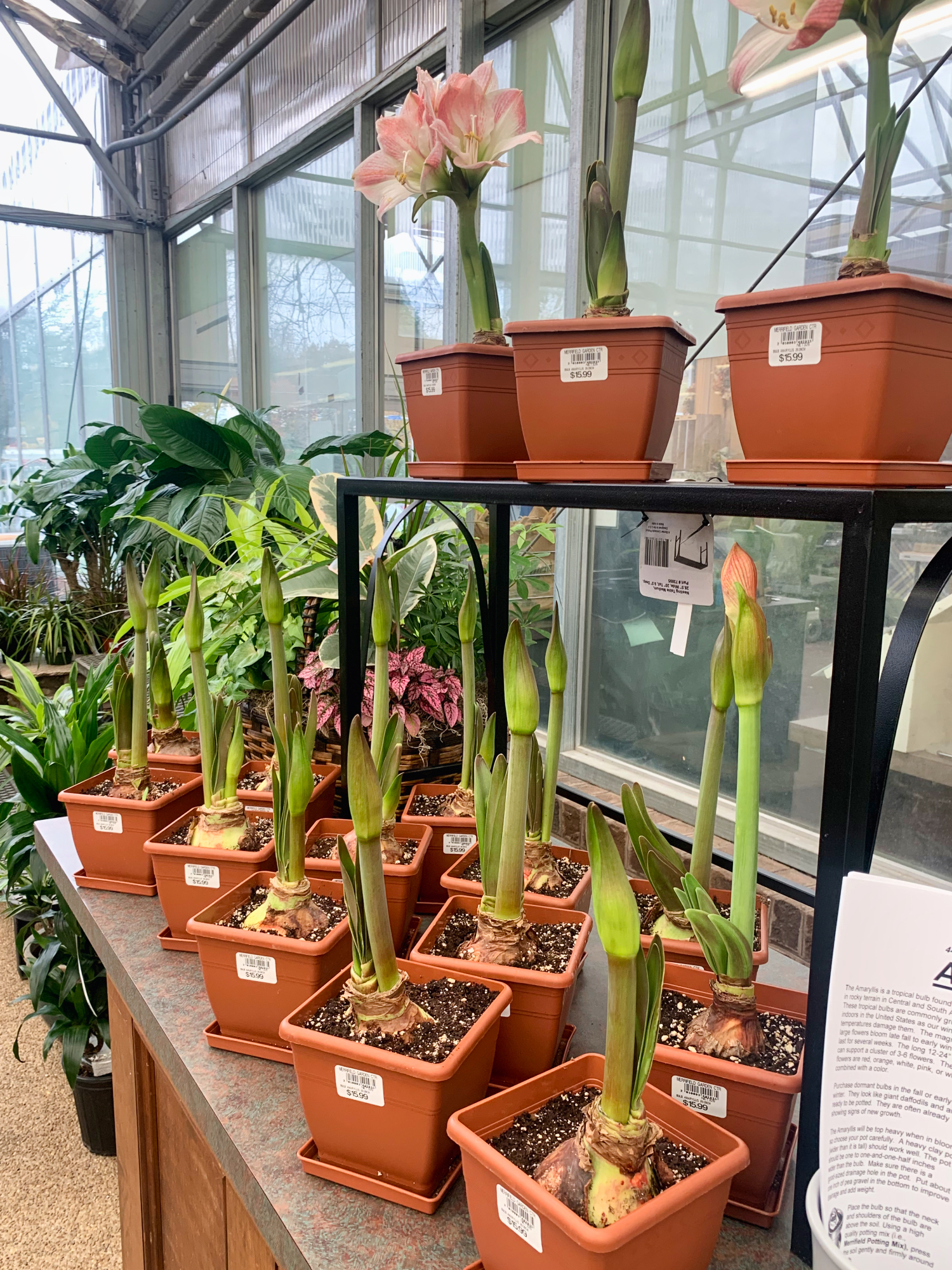
It is December 5, 20 days before Christmas and we have some results! While I had been fearing trying to discern between minute differences in three different white flowered amaryllis grown by AgroFloral in Peru, I hadn’t considered that they could make things so easy for me. They have provided a double white variety they grow, namely ‘Alasca’. It certainly isn’t their other double white, ‘Ice Queen’. Here’s the hitch. It seems odd that a “sonatini” class variety would be the chosen cultivar to produce for holiday forcing, in Peru. ‘Alasca’ has mostly been marketed as a hardier garden type, suitable for outdoor use in mild temperate climates. It gets muddier when you look at images of ‘Alfesco’ and its twin ‘Marquis’.
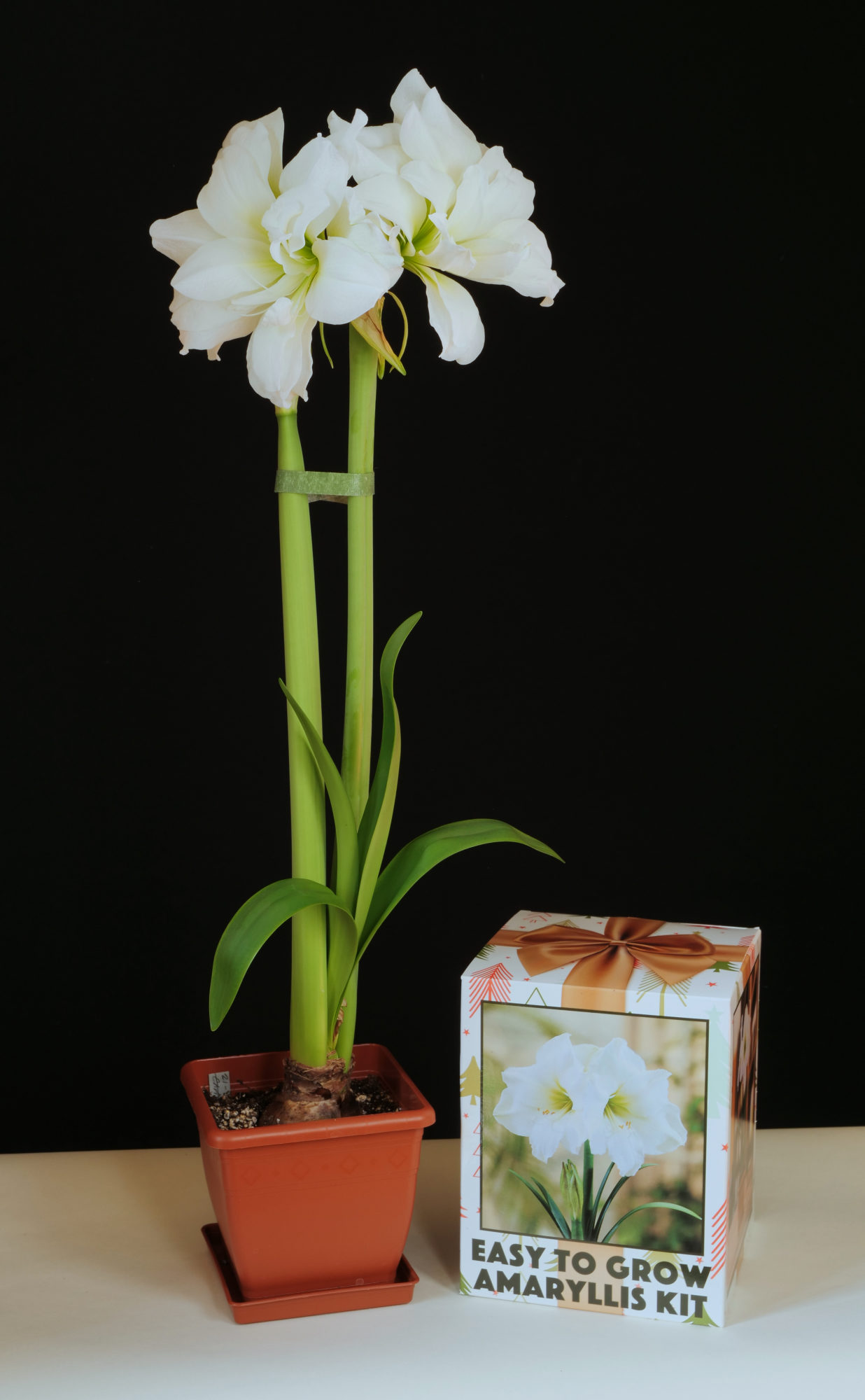
Seeing this double white amaryllis from this brand box kit brought an instant wash of deja vu. Why? Because a version of the kit from Netherland Bulb Company was purchased last year (and for some reason not included with last season’s posts…let’s blame Covid). The white amaryllis stock photos (which looks like that of ‘Christmas Gift’) are the same. The kit differed in some carton design elements, and the white varieties’ name, and an actual 26/28cm bulb claim size. The bulb origin was noted as Israel. It was emblazoned boldly with the cultivar name ‘Athene’ which has been only occasionally sold, though it is an officially registered cultivar. It was a few dollars cheaper as well, so its performance was a bonafide bargain. That kit produced the same double variety that we see in here in 2021. The 2020 “not Athene” bulb itself was incredible, producing three scapes and a total of 17 flowers from a 27cm bulb. We can only hope so much for this years “not White Christmas”.
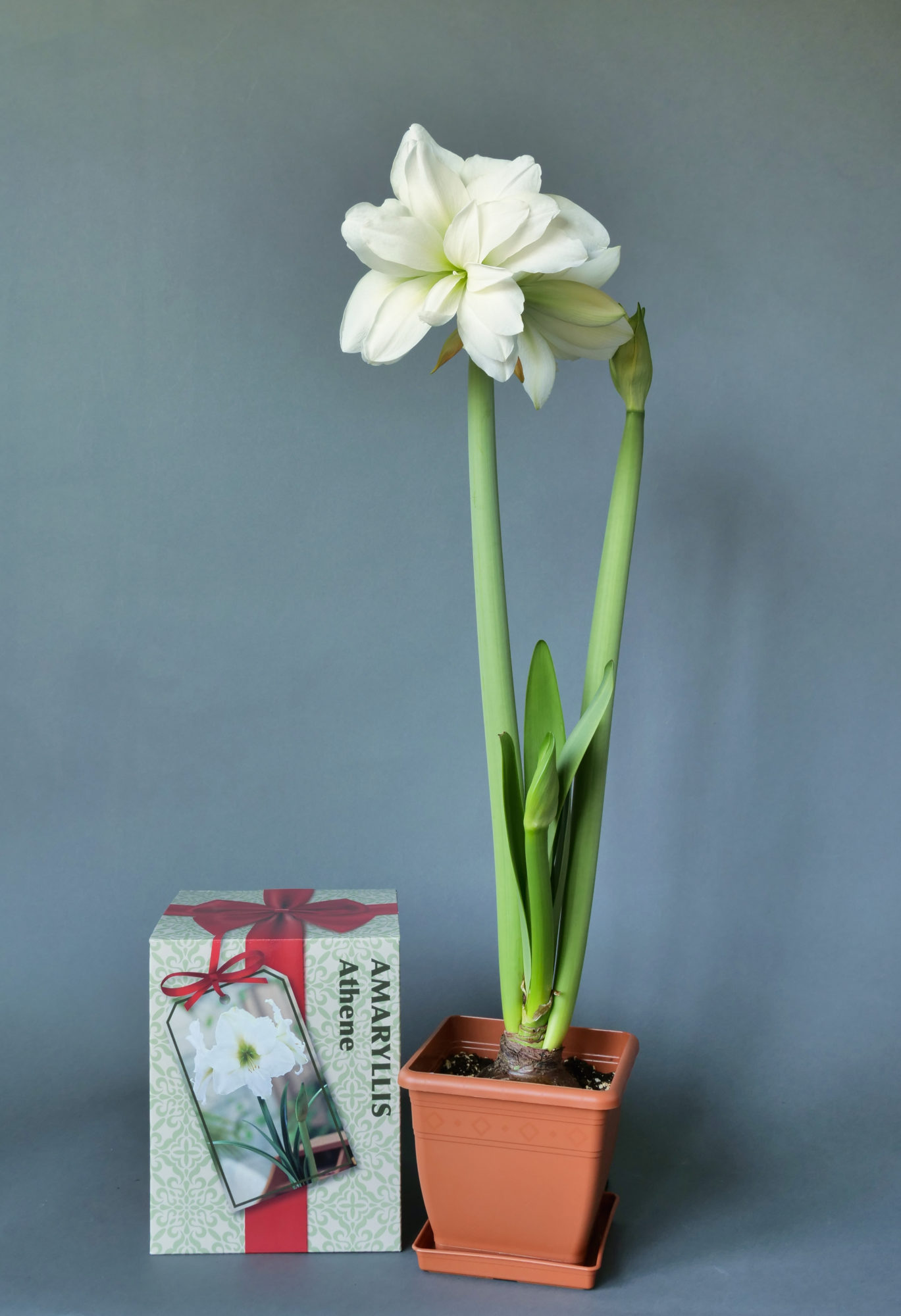
There is almost certainly some cultivar name jiggery-pokery going on with these kits and their Peru vs. Israel pedigreed bulbs. The biggest Peruvian producer shows ‘Alasca’ as one of their double white clones, and Saad-Assaf of Israel used to tout ‘Marquis’ as their double white offering. It is identical to ‘Alfresco’. The Emaryllis take? Both kits in two different years, with bulbs from suppliers in two different countries are (or have been) producing ‘Alfresco’. It is a remarkably productive cultivar, producing lots of flowers on each of up to three scapes on decent sized bulbs. There is one possible flaw in the popular variety: some scapes produced have a long vertical crease or fold that predisposes those scapes to require support.
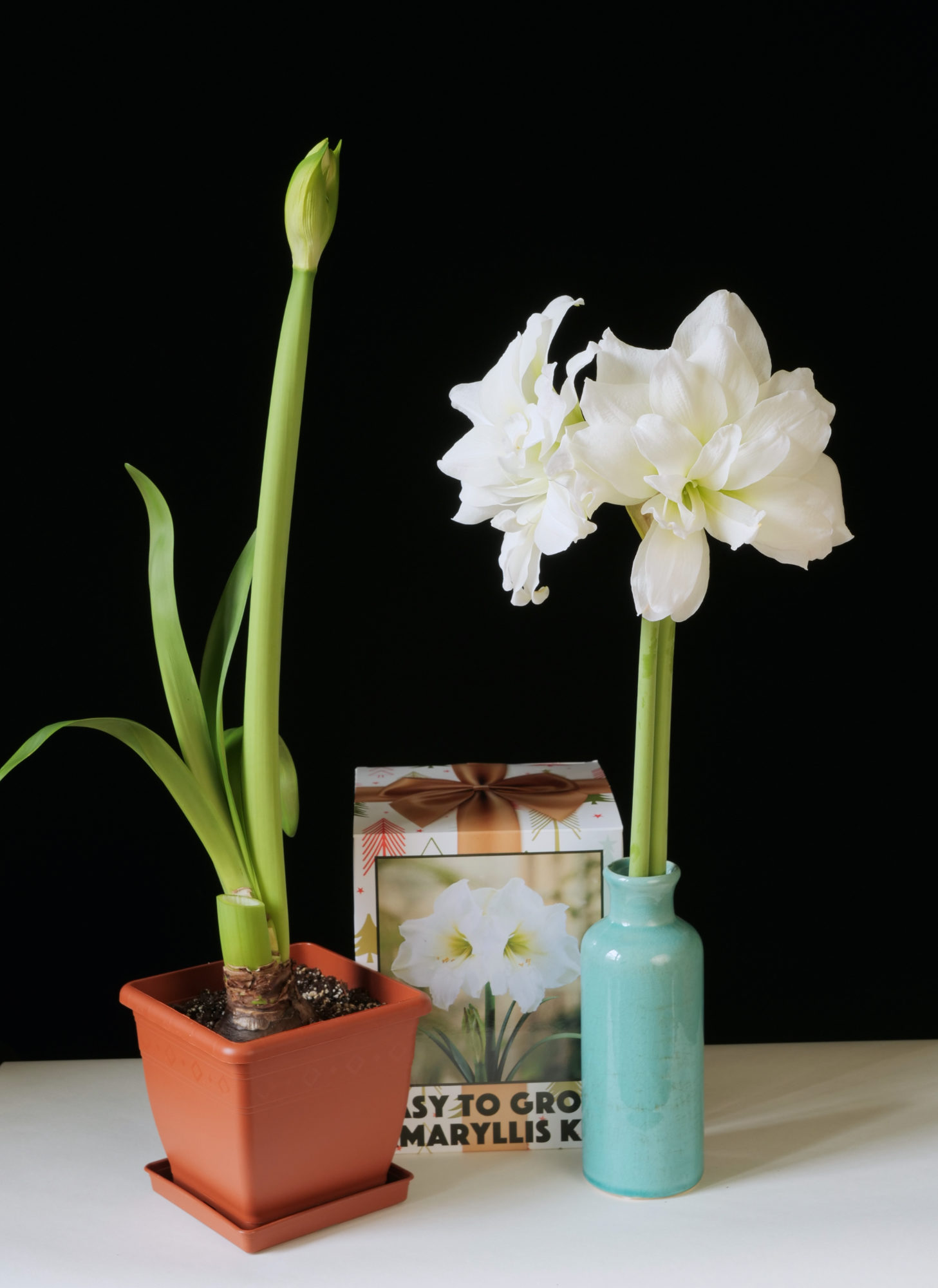
So we have a pretty interesting situation here. In reviewing as many older photos of ‘Alfresco’, ‘Marquis’ and ‘Alasca’ as possible it seems like ‘Alasca’ produces slightly smaller, looser flowers and is a distinctive variety. You can bet we will try to obtain fresh bulbs of it this season to take a closer look. Noting photos of ‘Alfresco’ over the years, it seems clear that the occasional scape is produced with a vertical cleft or crease which may assist in identification. We’ll come back to this topic, but for now, let’s just celebrate the nice performance so far, whatever the cultivar may be. Here comes that second scape!
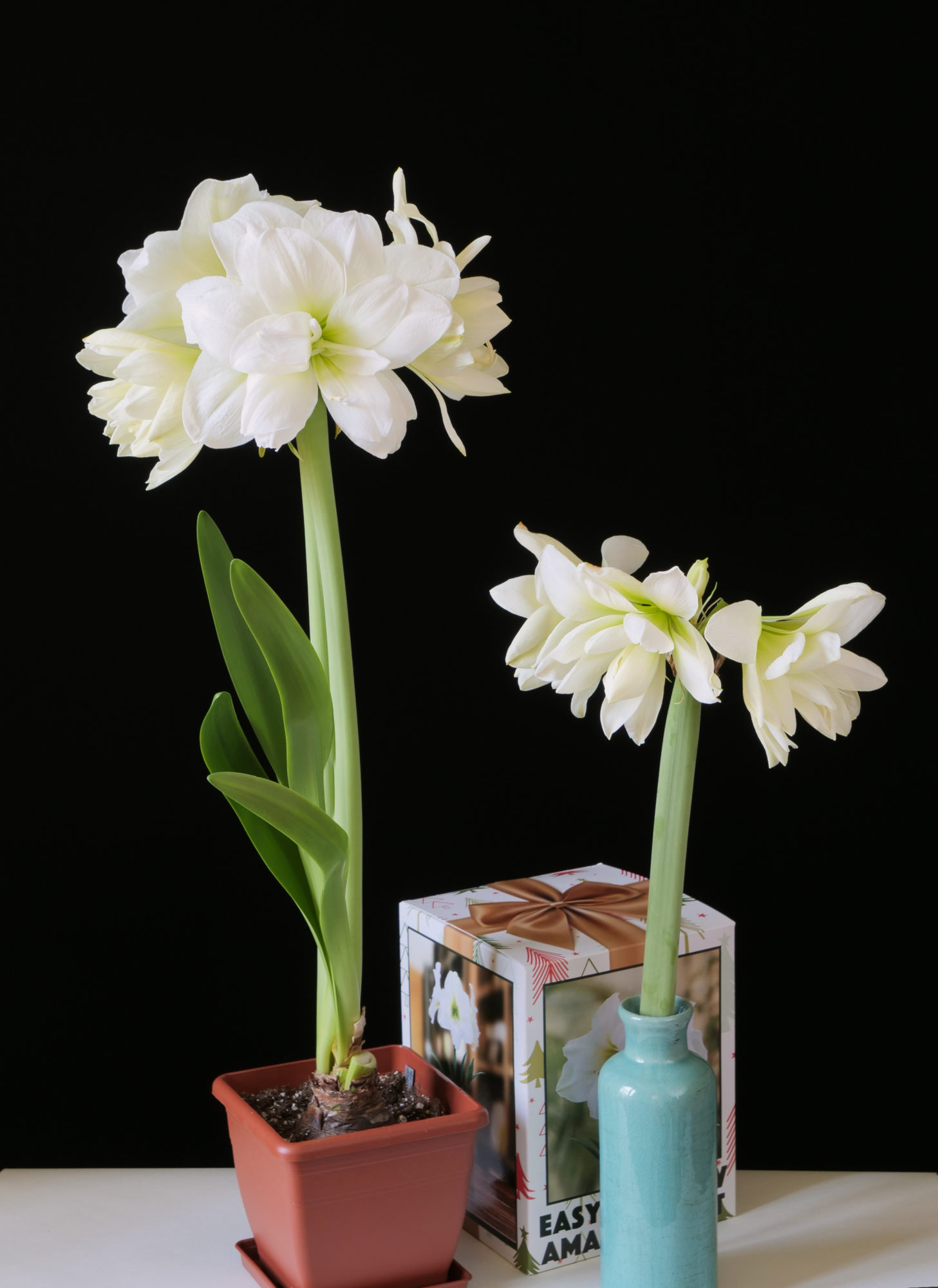
While the second scape is in its glory, we also have more buds opening on the first scape which was cut. All in all a good performance with each scape managing to open 6 flowers for total of twelve flowers. Considering that we didn’t have to provide growing media, or a pot, the value is there. Maybe not the bargain of the century, but still decent return on investment.
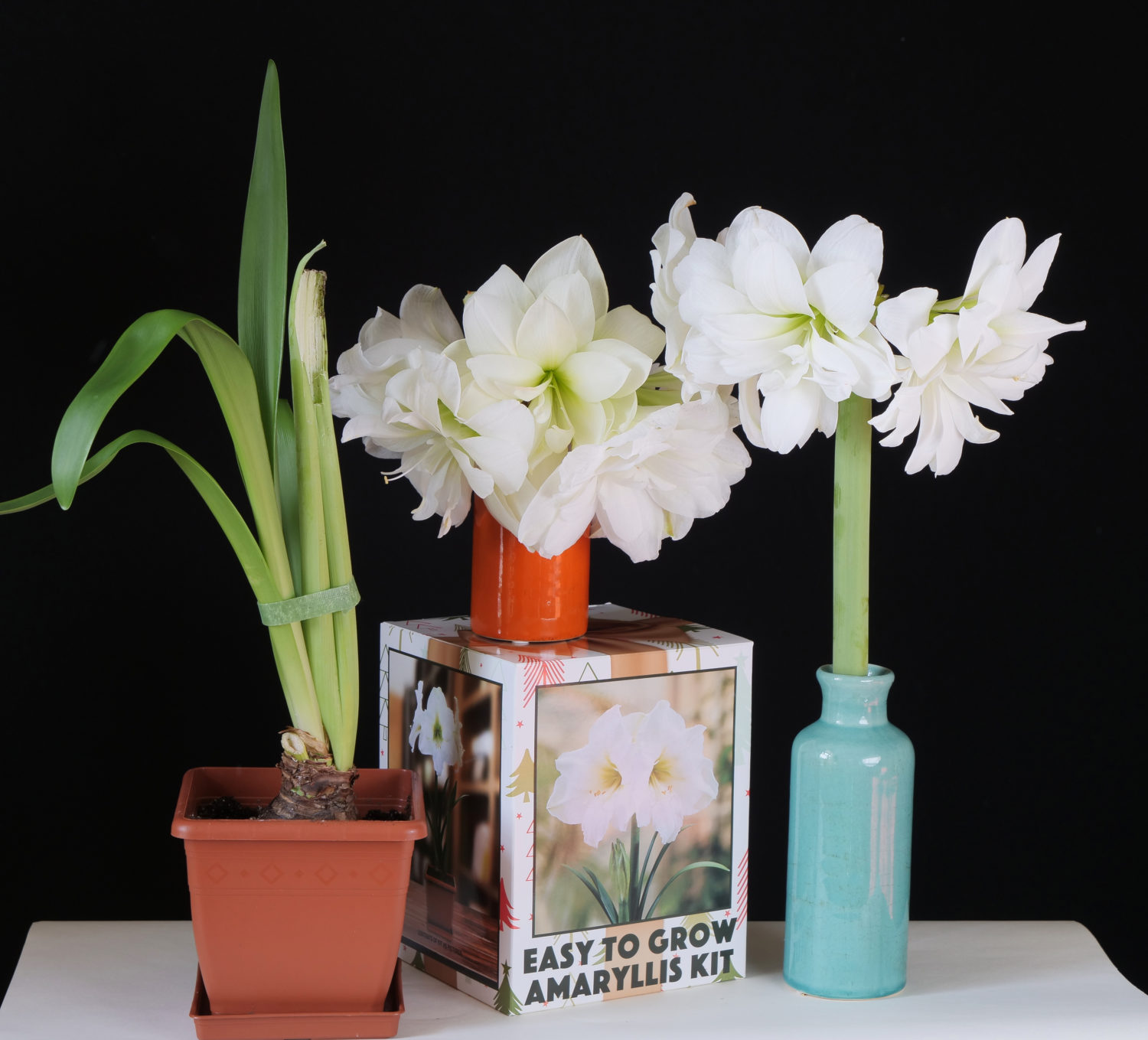
Coming home to find soil, flowers and pot sprawling on the floor beneath its growing bench was an unpleasant surprise…or should it have been such a surprise? It seems that the defect noted in the first scape was present in a big way on the second as well. A deep crease created a weakness that meant it just couldn’t bear the weighty cluster of blooms. The top portion literally tore away, the motion toppling the whole plant. What is interesting about all of this is that it may be a useful diagnostic trait for the cultivar. Plumbing the Emaryllis archive of older photos of ‘Alfresco’ and its twin ‘Marquis’ shows that the tendency to produce scapes with deep clefts is common. That cinches the claim that the two clones are indeed the same. But what about ‘Alasca’? While it seems very similar, the limited number of photos available don’t show this trait, so more study is needed. Both ‘Alfresco’ and ‘Alasca’ were bred by branches of the famed Barnhoorn family with businesses in both South Africa and the Netherlands. Perhaps they are siblings from the same cross?
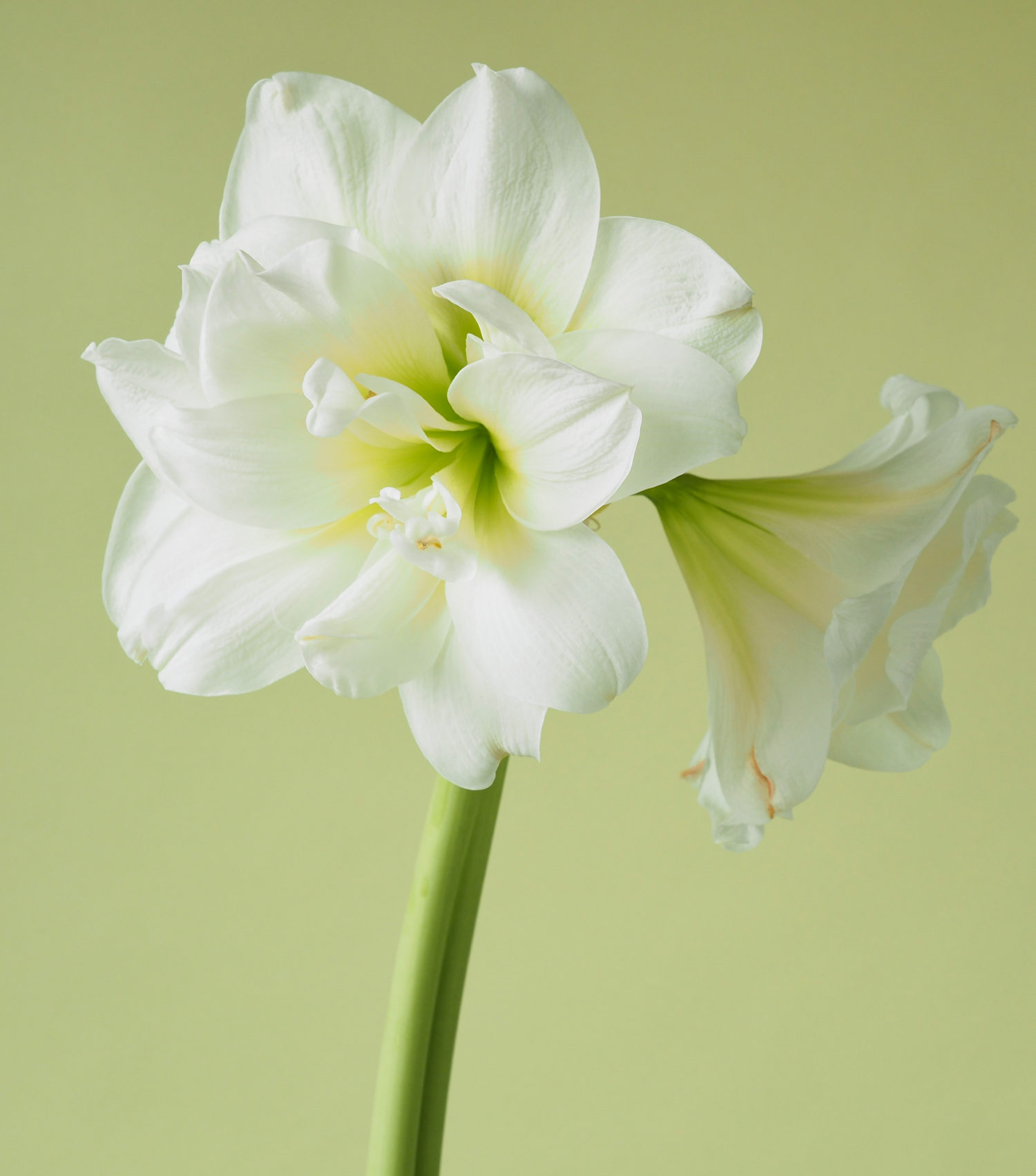
Whatever ultimately proves with the name game, our performance here seems to be wrapped up. We’ll keep growing the bulb to see if it manages a third scape…but don’t hold your breath! Still, with a total production of twelve flowers, the value of the kit seems pretty solid, even if the cultivar was neither single flowered, nor able to hold its scapes steady for the usual potted display.
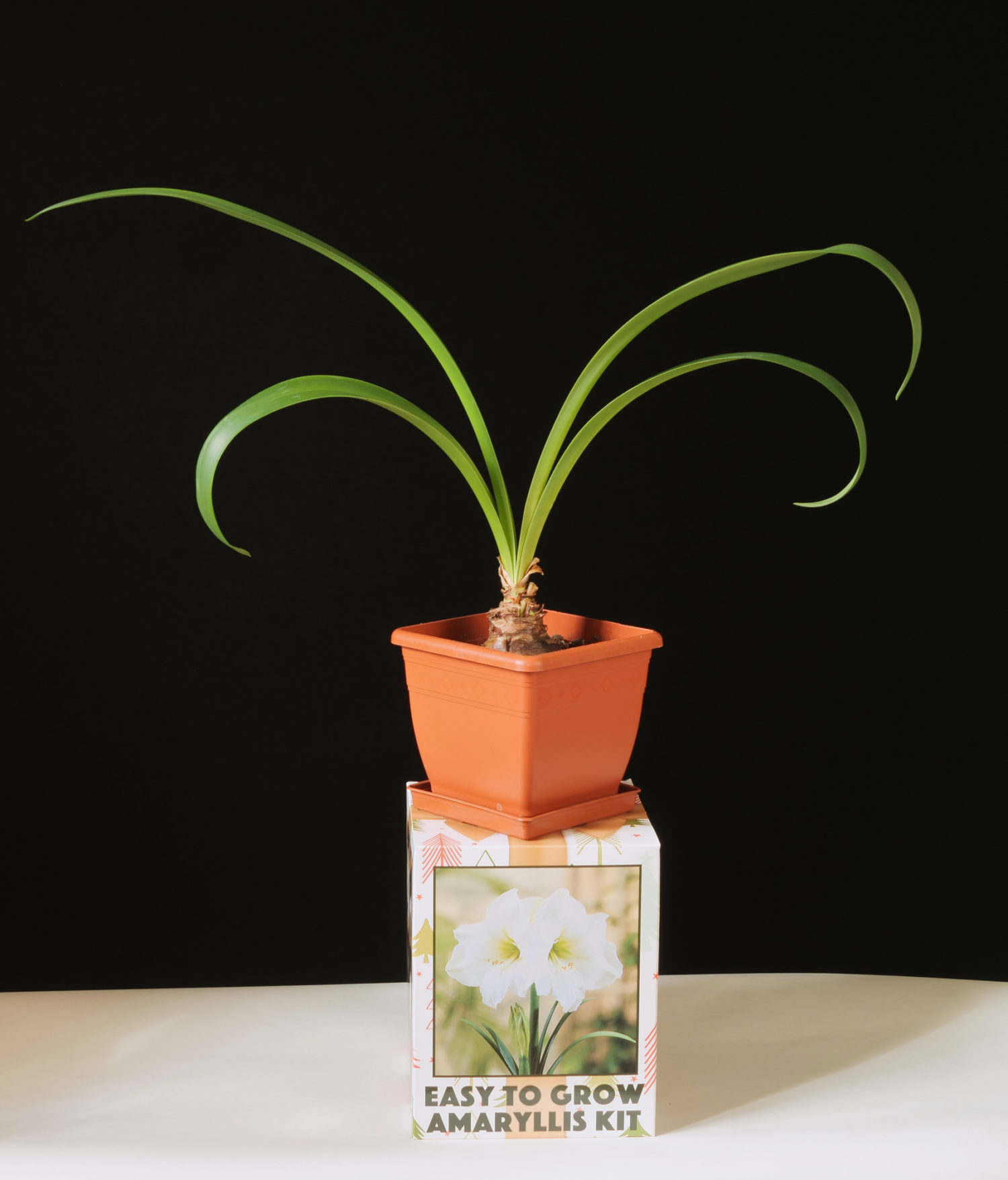
This kit was truly a mixed bag. Wrong variety. Great floral production on the two scapes produced. Scape deformation that led to cutting them to preserve the show. We’ve seen ‘Alfresco’/’Marquis’/’Snow Drift’ make some amazing performances in the past, so this one leaves us wanting. If the scapes were normally formed and had remained upright, we’d be singing a different tune, despite the obvious mislabeling. While the price wasn’t too expensive, the value was only fair. Maybe just re-naming these kits back to ‘Athene’ would reverse the curse!

Yay! Life is always better when I see Emaryllis has a new blog post (-:
You just made my day, thank you!
“The color class will probably at least be solid white”
I wish I had your confidence. I’ve had white amaryllis bloom pink, striped amaryllis bloom solid red and dark red solid amaryllis bloom pale red & white!
My experience with this brand kit has usually been good when it comes to at least ‘Minerva’ being correct (even ‘Mambo’ was a very close facsimile!). The bulb supplier has three white varieties in production, so if they can’t get the color correct, it means the switch is happening in the packing plant…which I’m sure does happen!